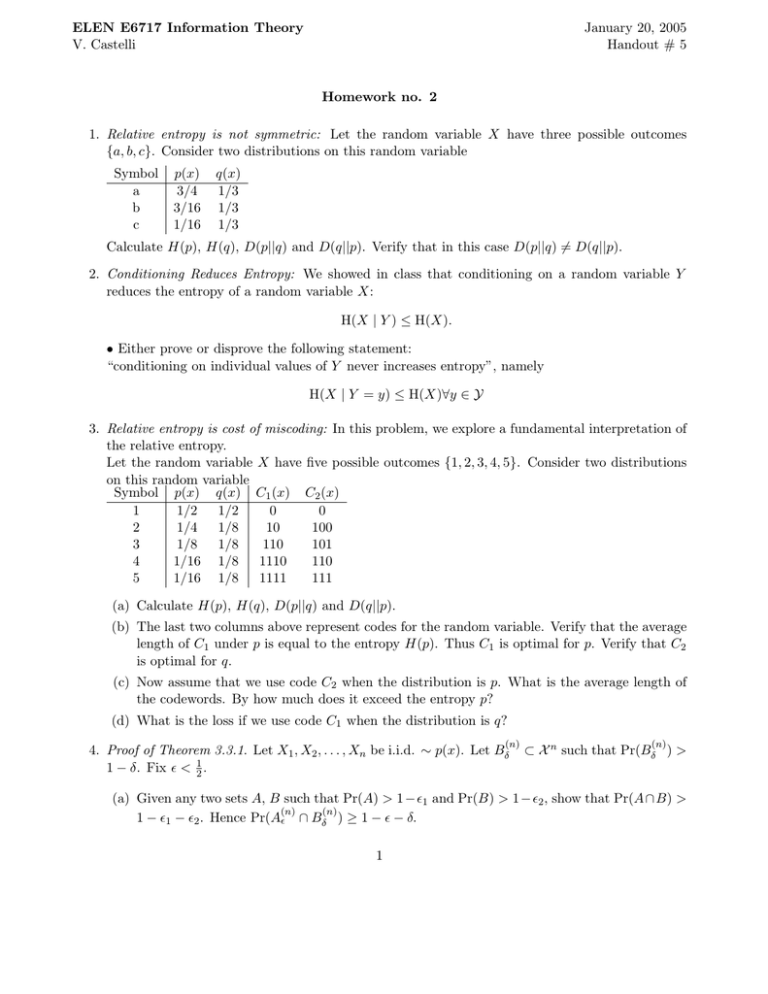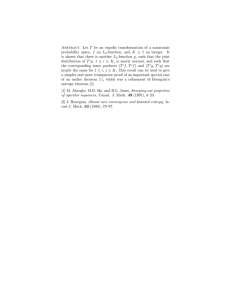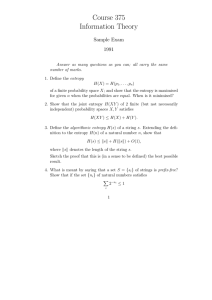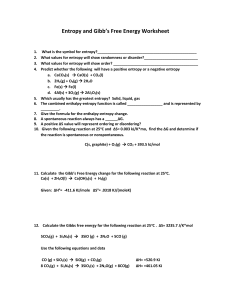ELEN E6717 Information Theory Homework no. 2 January 20, 2005 V. Castelli
advertisement

ELEN E6717 Information Theory
V. Castelli
January 20, 2005
Handout # 5
Homework no. 2
1. Relative entropy is not symmetric: Let the random variable X have three possible outcomes
{a, b, c}. Consider two distributions on this random variable
Symbol
a
b
c
p(x)
3/4
3/16
1/16
q(x)
1/3
1/3
1/3
Calculate H(p), H(q), D(p||q) and D(q||p). Verify that in this case D(p||q) = D(q||p).
2. Conditioning Reduces Entropy: We showed in class that conditioning on a random variable Y
reduces the entropy of a random variable X:
H(X | Y ) ≤ H(X).
• Either prove or disprove the following statement:
“conditioning on individual values of Y never increases entropy”, namely
H(X | Y = y) ≤ H(X)∀y ∈ Y
3. Relative entropy is cost of miscoding: In this problem, we explore a fundamental interpretation of
the relative entropy.
Let the random variable X have five possible outcomes {1, 2, 3, 4, 5}. Consider two distributions
on this random variable
Symbol p(x) q(x) C1 (x) C2 (x)
1
1/2
1/2
0
0
2
1/4
1/8
10
100
1/8
1/8
110
101
3
4
1/16 1/8
1110
110
5
1/16 1/8
1111
111
(a) Calculate H(p), H(q), D(p||q) and D(q||p).
(b) The last two columns above represent codes for the random variable. Verify that the average
length of C1 under p is equal to the entropy H(p). Thus C1 is optimal for p. Verify that C2
is optimal for q.
(c) Now assume that we use code C2 when the distribution is p. What is the average length of
the codewords. By how much does it exceed the entropy p?
(d) What is the loss if we use code C1 when the distribution is q?
(n)
4. Proof of Theorem 3.3.1. Let X1 , X2 , . . . , Xn be i.i.d. ∼ p(x). Let Bδ
1 − δ. Fix < 12 .
(n)
⊂ X n such that Pr(Bδ ) >
(a) Given any two sets A, B such that Pr(A) > 1−1 and Pr(B) > 1−2 , show that Pr(A∩B) >
(n)
(n)
1 − 1 − 2 . Hence Pr(A ∩ Bδ ) ≥ 1 − − δ.
1
(b) Justify the steps in the chain of inequalities
(n)
1 − − δ ≤ Pr(A(n)
∩ Bδ )
=
n
(1)
p(x )
(2)
2−n(H−)
(3)
(n)
(n)
A ∩Bδ
≤
(n)
(n)
A ∩Bδ
(n)
−n(H−)
= |A(n)
∩ Bδ |2
(4)
≤ |Bδ |2−n(H−) .
(5)
(n)
(c) Complete the proof of the theorem.
2











